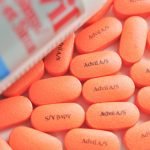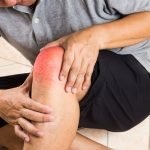Alzheimer’s Disease: A Primer
Alethea Fleming, ND
Alzheimer’s Disease (AD) is a diagnosis that equally challenges clinicians, patients, and family members. The number of patients with this condition is rising rapidly as our population ages. By the year 2040 – only 15 years from now – it is anticipated that 20% of the population in the United States will be over the age of 65.1 The biggest risk factor for dementia is simply age, with half of all people over age 85 having some form of dementia.2 Alzheimer’s accounts for approximately 80% of all dementias.3 Understanding and treating AD is something that all naturopathic physicians need to be comfortable with, sooner rather than later.
The primary dementia diagnoses include:
- Alzheimer’s disease: The most common form of dementia among individuals over age 65; amyloid plaques and neurofibrillary tangles in the brain are characteristic of the disease; memory is most commonly affected, though other mental functions can become impaired with disease progression4
- Early-onset Alzheimer’s disease: Has a strong genetic component; onset is in one’s 50s or before; decline is more rapid than with the more common form of Alzheimer’s
- Vascular dementia: Occurs as a result of a cerebrovascular incident; in advanced dementia may be mixed with AD
- Frontotemporal lobe dementia: Onset is between ages 40 and 70; often includes strong personality changes and detectable inclusions such as Pick cells or Lewy bodies
Risk Factors for Alzheimer’s Disease
Along with aging, risk factors for AD include the following:
- Mild Cognitive Impairment (MCI): MCI has been referred to as “pre-Alzheimer’s,” since 80% of MCI patients were believed to progress to Alzheimer’s disease. More recent studies suggest a much lower rate of progression, from 2% to 7.4%.5 MCI is abnormal memory function for one’s age, but without the debilitation associated with AD.
- Head Injury: History of traumatic brain injury may lead to Alzheimer’s.6 Always ask about this with new patients.
- Diabetes and pre-diabetes: These risk factors are more relevant in the “younger elders” (under age 80), and are particularly concerning in patients with a known diagnosis of MCI.
- APOE-4 gene: This genotype is found in 40% of patients with AD.7 Note: 25% of the unaffected population has APOE-4. APOE-3 is neutral in effect, and APOE-2 may even be protective.7
- Polypharmacy: 37% of Americans age 60 and older are on 5 or more medications.8 Drug interactions can impact memory function, and certain specific pharmaceutical medications have been linked to dementia risk, such as benzodiazepenes.9
What is Normal in Aging?
When distinguishing dementia from typical age-related changes, there are several points that help with baseline differential diagnosis. The following changes are considered normal with aging, thus are not diagnostic of dementia:
- Decreased ability to multi-task. The brain is always less efficient when attempting to manage multiple mental activities simultaneously, but with age the ability to juggle several discrete threads at once noticeably deteriorates. Sometimes this can be a healthy wake-up call to patients, and with a deliberate shift to a more “one thing at a time” focus, they notice increased patience, mental clarity, and satisfaction.
- Slower response times. This can occur with cognitive recall (“What was that person’s name?”) and with physical response times (eg, catching a ball). This generally improves when one is not multi-tasking, and patients can mitigate this effect by removing distractions. One important example of this is while driving – it’s helpful for the driver to not be carrying on a conversation, learning a new car and/or route, or be distracted by the parade by the side of the road.
- Forgetting things, but remembering them later. This recall can occur minutes or hours later. Once again, this is something that humans of all ages do; it merely happens more frequently with age and we tend to pay more attention to it. As long as we are forgetting things like where a book was laid, or items on the grocery list, this is well within normal parameters. Obviously, if a person is forgetting to the point of leaving the burner on, or the front door wide open for hours, this is a matter of greater concern.
- Ability to learn new things. If patients can learn a new game, discuss a recent book or article that interested them, or master a new technology, then they are unlikely to have dementia. This is because the most common forms of dementia degrade the frontal cortex’s ability to lay down new pathways early on in the disease.
Diagnosis of AD
While imaging is not considered routine for screening or even for diagnosis, it is still used by some physicians when attempting to establish a diagnosis. MRI is the best way to discern whether there is global atrophy or specific lobe atrophy. A CT scan is best for ruling out space-occupying lesions and identifying areas with neurofibrillary tangles (higher numbers in AD) and beta-amyloid plaques (a pathological sign of AD).
Diagnosis of AD is still largely clinical rather than test-based. While certain biomarkers, such as presence of the APOE-4 gene, can reflect increased risk, they are not causative and therefore are of limited use in routine testing. Imaging can reveal the presence of structural elements like neurofibrillary plaques in the brain; however, presence alone is not directly correlated to clinical presentation of disease, and imaging is too costly to use for routine screening. The best clinical evaluation tools remain cognitive screening tests. The Mini Mental Status Exam (MMSE) is the best known and most widely used; however, more recently developed tests like the Montreal Cognitive Assessment (MoCA) are more sophisticated and are just as easy to use.
Here are a few clinical pearls to keep in mind… Anosmia – loss of sense of smell – is potentially a clinical predictor for the development of Alzheimer’s10 or Lewy Body dementia (which has some overlap with Parkinson’s).11 Also, screen for possible changes in language use, as new research shows that degradation of language complexity – such as excessive repetition, use of filler words, and decrease in use of unique words – can be an early predictor of dementia.12
Treatment
Pharmaceutical Medications
Anti-cholinesterase inhibitors (eg, donezepil, rivastigmine, galantamine) work by inhibiting the acetylcholinesterase enzyme, thereby increasing the amount of circulating acetylcholine (which is typically low in Alzheimer’s patients). These medications are optimally used when trying to keep a patient at home, since although they temporarily slow the decline and progression of symptoms, the effect is temporary – 6-12 months at best. NMDA receptor antagonists (eg, memantine) are used in moderate-to-severe AD, and work by blocking excess glutamate, which is neuro-excitatory. These drugs are also temporary in effect and carry strong side effects. They are often used in conjunction with anti-cholinesterase inhibitors.
Diet, Nutrition & Exercise
Fundamentally, like many diseases, AD responds well to a low-glycemic,13 anti-inflammatory diet. This approach may affect epigenetic expression of the APOE-4 gene, as well as increase clearance of beta-amyloid plaques. There is some evidence of a connection between AD and herpes simplex virus-1 (HSV-1),14 so maintenance of an L-lysine-rich diet for affected patients may be of benefit. Coconut oil has often been cited anecdotally as being useful for patients with a variety of neurodegenerative diseases. The literature is not supportive at this time, but given the low risk associated with regular consumption of coconut oil, I often advocate that patients use this in their daily cooking. Caffeine consumption, coffee in particular,15 has been linked to both short- and long-term cognitive health, so is easily recommended unless contraindicated by other comorbidities, such as atrial fibrillation or chronic insomnia.
Exercise is a critical component of care for patients trying to prevent AD or are living with the disease. Physical exercise mediates effects of common possible contributory illnesses. It also decreases risk factors for those diseases, notably hypertension and type 2 diabetes. It increases cerebral blood flow and production of neurotrophins (eg, brain derived neurotrophic factor, or BDNF). Exercise decreases the risk of dementia while increasing cognitive performance. The bottom line is that exercise helps – any form of exercise – and all patients (and their doctors) should be active every single day.
Substantial clinical benefit can be derived from employing the dietary changes listed above, getting daily exercise, and improving sleep quality and quantity. See Table 1 if additional treatments are deemed appropriate.
Table 1. Top 3 Additional Treatments
| Compound | Dosage | Clinical Effect |
| Bacopa monnieri | 300-450 mg QD | Improves memory recall; neuroprotective16 |
| Vitamin E | 2000 IU QD | Decreases rate of functional decline17 |
| Hericium erinaceus (lion’s mane mushroom) | 1000-4000 mg of hot water extract per day (containing a minimum of 15% beta-glucan) | Stimulates nerve growth factor; improves cognitive impairment18 |
Summary
As our population continues to age at a rapid pace, physicians should be prepared to treat Alzheimer’s disease. As with other chronic illnesses, a multi-faceted approach is important. The tools listed above can help you create a simple structure for approaching care of patients with Alzheimer’s.
 Alethea Fleming, ND, is a passionate advocate for naturopathic geriatric medicine. She is a 2007 Bastyr University graduate, as well as a member of WANP, AANP, and OncANP. Dr Fleming is the owner and lead physician of the Vital Aging Clinic in Anacortes, Washington, providing primary and adjunctive care. She is an engaging public speaker who strives to make naturopathic geriatric care accessible to all providers. In her off hours, Dr Fleming can be found hiking the trails of Fidalgo Island, spending time with her family, or with her nose firmly in a good book.
Alethea Fleming, ND, is a passionate advocate for naturopathic geriatric medicine. She is a 2007 Bastyr University graduate, as well as a member of WANP, AANP, and OncANP. Dr Fleming is the owner and lead physician of the Vital Aging Clinic in Anacortes, Washington, providing primary and adjunctive care. She is an engaging public speaker who strives to make naturopathic geriatric care accessible to all providers. In her off hours, Dr Fleming can be found hiking the trails of Fidalgo Island, spending time with her family, or with her nose firmly in a good book.
References:
- The United States Census Bureau. The Older Population: 2010. Issued November 2011. Available at: http://www.census.gov/prod/cen2010/briefs/c2010br-09.pdf. Accessed April 20, 2015.
- Cleveland Clinic. Diseases & Conditions: Dementia. Last reviewed September 5, 2014. Available at: http://my.clevelandclinic.org/health/diseases_conditions/hic_Types_of_Dementia. Accessed June 1, 2015.
- Alzheimer’s Association. Types of Dementia. Alz.org Web site. http://www.alz.org/dementia/types-of-dementia.asp. Accessed June 1, 2015.
- United States Department of Health and Human Services. National Institute on Aging. Alzheimer’s Disease Education and Referral Center. Alzheimer’s Disease Fact Sheet. Updated June 9, 2015. NIH Web site. https://www.nia.nih.gov/alzheimers/publication/alzheimers-disease-fact-sheet. Accessed June 15, 2015.
- Rosenberg PB, Lyketsos C. Mild cognitive impairment: searching for the prodrome of Alzheimer’s disease. World Psychiatry. 2008;7(2):72-8.
- Johnson VE, Stewart W, Smith DH. Traumatic brain injury and amyloid-β pathology: a link to Alzheimer’s disease? Nat Rev Neurosci. 2010;11(5):361-370.
- United States Department of Health and Human Services. National Institute on Aging. Alzheimer’s Disease Education and Referral Center. Alzheimer’s Disease Genetics Fact Sheet. Updated April 13, 2015. NIH Web site. http://www.nia.nih.gov/alzheimers/publication/alzheimers-disease-genetics-fact-sheet. Accessed April 20, 2015.
- Gu Q, Dillon CF, Burt VL. Prescription Drug Use Continues to Increase: U.S. Prescription Drug Data for 2007-2008. NCHS Data Brief. Number 42, September 2010. CDC Web site. http://www.cdc.gov/nchs/data/databriefs/db42.htm. Accessed April 20, 2015.
- Billioti de Gage S, Moride Y, Ducruet T, et al. Benzodiazepine use and risk of Alzheimer’s disease: case-control study. BMJ. 2014;349:g5205
- Makowska I, Kloszewska I, Grabowska A, et al. Olfactory deficits in normal aging and Alzheimer’s disease in the Polish elderly population. Arch Clin Neuropsychol. 2011;26(3):270-279.
- Sato T, Hanyu H, Kume K, et al. Difference in olfactory dysfunction with dementia with Lewy bodies and Alzheimer’s disease. J Am Geriatr Soc. 2011;59(5):947-948.
- Berisha V, Wang S, LaCross A, Liss J. Tracking discourse complexity preceding Alzheimer’s disease diagnosis: a case study comparing the press conferences of presidents Ronald Reagan and George Herbert Walker Bush. J Alzheimers Dis. 2015;45(3):959-963.
- Kopf D, Frölich L. Risk of incident Alzheimer’s disease in diabetic patients: a systematic review of prospective trials. J Alzheimer’s Dis. 2009;16(4):677-685.
- Wozniak MA, Frost AL, Itzhaki RF. Alzheimer’s disease-specific tau phosphorylation is induced by herpes simplex virus type 1. J Alzheimer’s Dis. 2009;16(2):341-350.
- Carman A, Dacks P, Lane R, et al. Current evidence for the use of coffee and caffeine to prevent age-related cognitive decline and Alzheimer’s disease. J Nutr Health Aging. 2014;18(4):383-392.
- Singh M, Murthy V, Ramassamy C. Modulation of hydrogen peroxide and acrolein-induced oxidative stress, mitochondrial dysfunctions and redox regulated pathways by the Bacopa Monniera extract: potential implications in Alzheimer’s disease. J Alzheimer’s Dis. 2010;21(1):229-247.
- Dysken MW, Sano M, Asthana S, et al. Effect of vitamin E and memantine on functional decline in Alzheimer’s disease: the TEAM-AD VA cooperative randomized trial. JAMA. 2014;311(1)33-44.
- Mori K, Inatomi S, Ouchi K, et al. Improving effects of the mushroom Yamabushitake (Hericium erinaceus) on mild cognitive impairment: a double-blind placebo-controlled clinical trial. Phytother Res. 2009;23(3):367-372.










